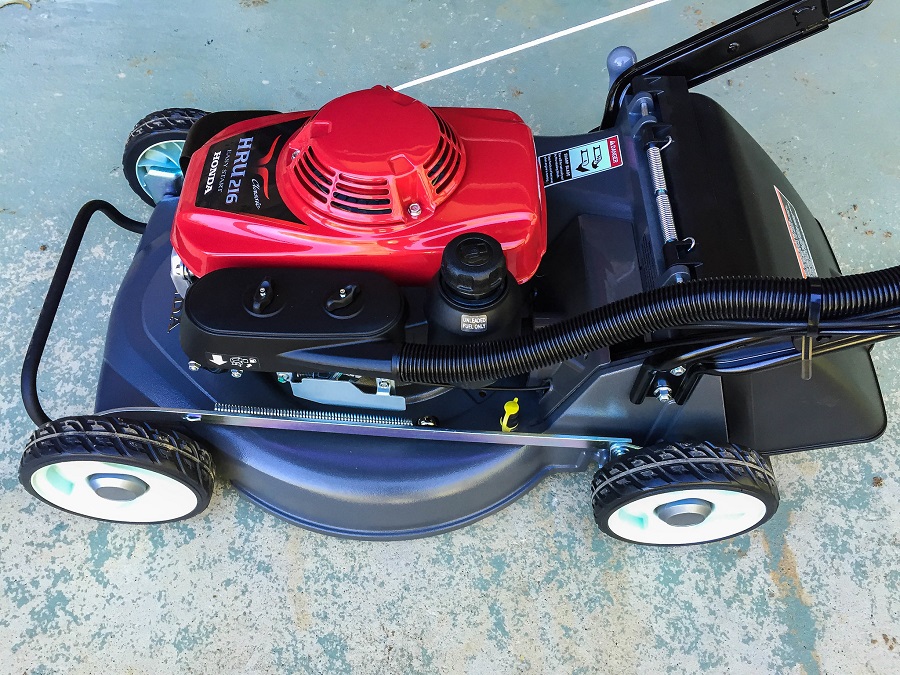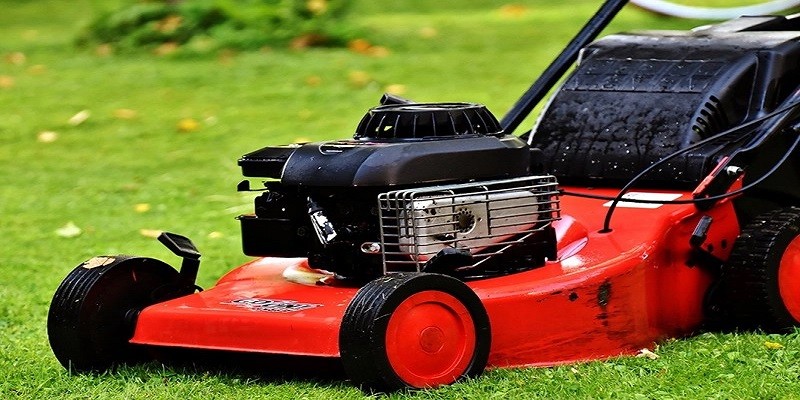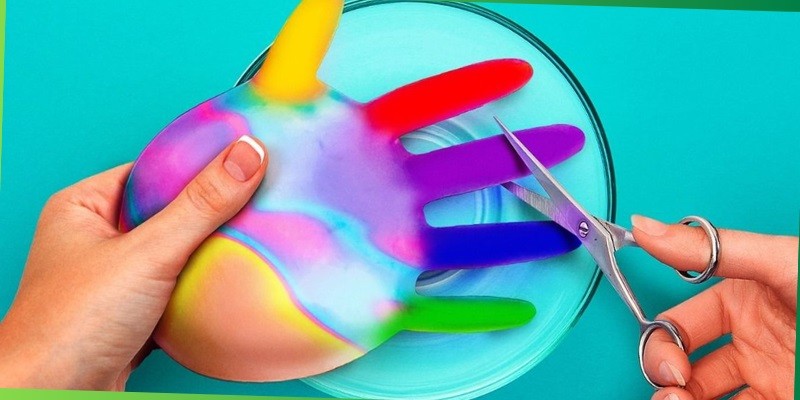Last Updated on January 15, 2025
To fix a self-propelled lawn mower, first check the drive belt for any damage and replace it if necessary. Then, inspect the wheels and make sure they are properly aligned and not worn out, adjusting or replacing them as needed.
Additionally, clean any debris or grass buildup from the mower deck and make sure the control cable is properly connected. Regular maintenance and keeping the mower clean will help prevent future issues.
Common Issues And Solutions
A self-propelled lawn mower can encounter common issues like a lack of power, uneven cuts, or difficulty starting. To fix these problems, check the spark plug, clean the carburetor, and inspect the drive belt for any signs of wear or damage.
Follow these simple solutions for a well-maintained and smoothly running mower.
Engine Not Starting:
- Check the fuel level: If your self-propelled lawn mower is not starting, the first thing to check is the fuel level. Ensure that there is enough fuel in the tank to power the engine.
- Clean or replace the spark plug: A dirty or faulty spark plug can prevent the engine from starting. Remove the spark plug and clean it using a wire brush. If it’s damaged or worn out, replace it with a new one.
- Check the air filter: A clogged air filter can restrict airflow, causing the engine to struggle or not start at all. Remove the air filter and clean or replace it if necessary.
- Inspect the fuel filter: A clogged fuel filter can restrict the fuel supply to the engine, resulting in starting issues. Replace the fuel filter if it’s dirty or clogged.
Loss Of Power Or Speed:
- Check the drive belt: A worn-out or loose drive belt can cause a loss of power or speed in a self-propelled lawn mower. Inspect the belt for any signs of wear or damage and replace it if needed.
- Clean the underside of the mower deck: Grass clippings and debris can accumulate on the underside of the mower deck, obstructing the blades’ rotation and reducing cutting power. Regularly clean the underside of the deck to ensure optimal performance.
- Sharpen the blades: Dull blades can lead to uneven cutting and a decrease in power. Remove the blades and sharpen them with a file or replace them if they are beyond repair.
- Adjust the throttle: If your self-propelled lawn mower lacks power or speed, check the throttle setting. Ensure it is adjusted properly for optimal engine performance.
Uneven Cutting:
- Check the blade height adjustment: Uneven cutting can occur if the blades are not properly adjusted. Check the blade height adjustment mechanism and ensure it is set to the desired cutting height.
- Inspect the blades for damage: Bent or damaged blades can cause an uneven cut. Remove and inspect the blades for any signs of damage. Replace them if necessary.
- Level the deck: An uneven mower deck can result in uneven cutting. Check the deck’s leveling adjustment and make any necessary adjustments to ensure it is parallel to the ground.
- Clean the mower deck: A buildup of grass clippings and debris on the underside of the mower deck can interfere with the blades’ ability to cut evenly. Regularly clean the deck to prevent this issue.
Remember, proper maintenance and regular servicing are essential for keeping your self-propelled lawn mower in optimal condition. By addressing these common issues and following the recommended solutions, you can troubleshoot and fix your mower, ensuring it runs smoothly and provides beautifully manicured lawns.
Checking And Cleaning The Mower
To fix a self-propelled lawn mower, start by checking and cleaning the mower. Ensure the blades are sharp, clear any debris, and inspect the engine for any issues. Regular maintenance will keep your mower running smoothly and extend its lifespan.
Inspecting spark plug and ignition system:
- Start by disconnecting the spark plug wire to prevent accidental starting.
- Remove the spark plug and examine its condition. Look for any signs of damage, such as worn electrodes or a cracked insulator.
- Clean the spark plug using a wire brush to remove any carbon deposits or dirt.
- Check the spark plug gap with a gap tool and adjust it if necessary.
- Inspect the ignition system for loose connections or damaged wires. Tighten any loose connections and replace any damaged wires.
Examining fuel system and carburetor:
- Turn off the fuel line or empty the fuel tank before inspecting the fuel system.
- Examine the fuel lines and filter for any cracks or blockages. Replace any damaged or clogged fuel lines or filters.
- Remove the carburetor bowl and inspect it for dirt, debris, or old fuel. Clean the bowl thoroughly using carburetor cleaner and a small brush.
- Check the carburetor float and needle valve for proper functioning. Replace any worn or damaged parts as needed.
- Reassemble the carburetor and ensure all connections are secure before reconnecting the fuel line.
Cleaning or replacing air filter:
- Locate the air filter housing, usually near the top or side of the mower engine.
- Remove the air filter cover and inspect the air filter for dirt or damage.
- If the air filter is dirty, clean it by gently tapping it against a hard surface or using compressed air. Avoid using water or cleaning solvents.
- If the air filter is damaged or extremely dirty, replace it with a new one.
- Reinstall the air filter and cover securely.
Checking oil levels:
- Start by locating the oil fill cap or dipstick on the mower engine.
- Remove the cap or dipstick and wipe it clean with a cloth or paper towel.
- Insert the dipstick fully into the oil reservoir without screwing it in and then remove it again.
- Check the oil level on the dipstick. It should be between the minimum and maximum marks.
- Add or replace the oil if necessary, using the recommended type and amount specified in the mower’s manual.
Remember to follow the manufacturer’s instructions and safety precautions when performing these maintenance tasks. Regularly checking and cleaning your self-propelled lawn mower will ensure optimal performance and extend its lifespan.
Replacing Or Repairing Parts
One way to fix a self-propelled lawn mower is by replacing or repairing the necessary parts. By inspecting the mower and determining which components require attention, you can ensure that your mower is operating smoothly and efficiently.
Keeping your self-propelled lawn mower in good working condition is essential for maintaining a beautiful lawn. Over time, certain parts may wear out or become damaged, requiring replacement or repair. Here are the key steps to follow when replacing or repairing parts on your self-propelled lawn mower:
Replacing Drive Belt:
- Check the owner’s manual: The first step in replacing the drive belt is to consult the owner’s manual for your specific model. This will provide you with the necessary instructions and guidelines.
- Gather the necessary tools: Before starting the replacement process, gather the tools required, such as a socket wrench, pliers, and a new drive belt.
- Locate the drive belt: Depending on your mower’s design, the drive belt may be located on the top or bottom of the machine. Refer to the owner’s manual for the exact location.
- Remove the old drive belt: Use the tools to carefully remove the old drive belt, taking note of how it is positioned before fully detaching it.
- Install the new drive belt: Align the new drive belt properly according to the manufacturer’s instructions. Ensure it is correctly positioned and properly tensioned.
- Test the mower: After replacing the drive belt, carefully test the mower to ensure that the new belt is functioning correctly and the mower is propelling as it should.
Repairing Or Replacing Wheels:
- Assess the condition of the wheels: Inspect the wheels for any signs of damage, excessive wear, or loss of traction. Determine whether a repair or replacement is necessary.
- Remove the old wheels: If replacing the wheels, use a wrench or pliers to remove the old wheels from the axle, taking note of their orientation.
- Install the new wheels: Attach the new wheels to the axle, ensuring they are securely in place. Follow any specific instructions provided by the manufacturer.
- Test the mower: Once the new wheels are installed, test the mower to ensure it rolls smoothly and operates correctly.
Sharpening Or Replacing Blades:
- Lift the mower safely: Before working on the blades, turn off the mower and disconnect the spark plug. Tilt the mower on its side, ensuring the gas cap is facing up, to access the blades.
- Inspect the blades: Check the blades for signs of damage or wear. If they are bent, cracked, or excessively dull, they may need to be replaced.
- Sharpening the blades: If the blades are still in good condition but dull, use a sharpening tool to restore their cutting edge. Follow the manufacturer’s instructions for the correct sharpening technique.
- Replacing the blades: If the blades are beyond repair or sharpening, replace them with new ones. Follow the instructions provided by the manufacturer for proper installation.
- Reassemble the mower: Once the blades are sharpened or replaced, carefully reassemble the mower, ensuring all parts are securely in place.
- Test the mower: Before resuming mowing, start the mower and observe the blades to ensure they are rotating smoothly and cutting effectively.
By following these steps, you’ll be able to replace or repair important parts of your self-propelled lawn mower, keeping it in optimal condition for a well-maintained lawn. Remember to consult the owner’s manual and follow all safety precautions before attempting any repairs or replacements.

Credit: www.gardentoolexpert.com
Frequently Asked Questions For How To Fix A Self Propelled Lawn Mower?
Why Has My Self-Propelled Mower Stopped Propelling?
Your self-propelled mower may have stopped propelling due to a worn-out drive belt or a faulty transmission.
Can A Self-Propelled Mower Be Fixed?
Yes, a self-propelled mower can be fixed by a professional technician or through DIY repairs.
How Do You Tighten The Self Propel Cable On A Lawn Mower?
To tighten the self propel cable on a lawn mower, follow these steps: 1. Disconnect the spark plug wire. 2. Locate the self propel cable adjustment nut. 3. Tighten the nut clockwise until the cable is taut. 4. Reconnect the spark plug wire and test the self propel function.
Can You Manually Push A Self-Propelled Mower?
Yes, you can manually push a self-propelled mower.
How Do I Fix A Self Propelled Lawn Mower That Won’T Start?
To fix a self propelled lawn mower that won’t start, first check the spark plug, fuel level, and air filter for any issues or clogs. Clean or replace as necessary.
Conclusion
To sum up, maintaining and fixing a self-propelled lawn mower is essential to ensure its optimal performance. By following the troubleshooting steps and conducting regular maintenance tasks, such as checking the blades, inspecting the drive belt, and cleaning the air filter, you can easily address common issues that might arise with your mower.
Don’t forget to consult the manufacturer’s manual for specific instructions and safety precautions. Remember, prevention is better than cure, so make sure to clean the deck after each use and store the mower in a dry and secure place. By investing some time and effort into fixing and maintaining your self-propelled lawn mower, you can prolong its lifespan and enjoy a well-kept lawn for years to come.
Happy mowing!







